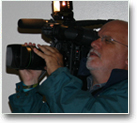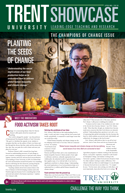 FOR IMMEDIATE RELEASE More Than 150 Archaeologists Gather at Trent University Today for Launch of Canadian Archaeological Association Annual ConferenceThursday, May 8, 2008, Peterborough The Trent University Archaeological Research Centre (TUARC) is proud to welcome more than 150 archaeologists from across Canada to Trent’s campus for the 41st Annual Meeting of the Canadian Archaeological Association from May 8 to 11. Papers covering a wide range of Canadian and international topics will be presented during the three-day conference. Several of the sessions, including Current Research in Latin America, Current Research in Northeastern Archaeology and Advances in Archaeological GIS and Remote Sensing will be chaired by faculty members from Trent University’s Anthropology Department. “Holding this conference at Trent provides a unique opportunity to spotlight the important work being conducted by our faculty and students, especially in the areas of Canada, Latin America, and the Mediterranean, and in material culture, environmental, and analytical archaeology,” said Dr. James Conolly, who holds a prestigious Canada Research Chair in Archaeology at Trent, and is the director of TUARC. “This event also gives our graduate students a chance to meet other leaders in the field which can help open new doors for them as future archaeologists.” The Canadian Archaeological Association (CAA) was founded in 1967 to promote the increase and the dissemination of archaeological knowledge in Canada. In addition to supporting archaeological research, heritage conservation and publication, CAA encourages active discourse and cooperation among archaeological societies government agencies and First Nations people. One such initiative at this meeting is a Roundtable Discussion on First Peoples and Ontario Archaeology. TUARC is a unique research institute that manages academic and research facilities for professional archaeologists, researchers, graduate students, and volunteers. It also sponsors workshops and special courses on archaeology. Research facilities include specialized laboratories for human osteology, Mesoamerican archaeology, Ontario archaeology, isotope studies, South American archaeology, archaeoinformatics (including Geographical Information Systems [GIS], remote sensing, spatial and quantitative analysis) and zooarchaeology. TUARC also assists with the publication of the findings of associated scholars, and organizes public lectures on recent archaeological discoveries and advances. Full conference details are available at http://www.tuarc.trentu.ca/caa. -30- For further information, please contact |
































